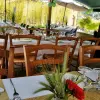By its favorable location, Saint-Marcellin (about 8500 inhabitants, capital of Canton) is at an important crossroads, with direct connection to the motorway Grenoble - Valencia, close to the Vercors. It is a hub of economic activities and tourism of South Grésivaudan.
Saint-Marcellin has a rich history in the vicinity of two places of powers, political and religious, the castle of Beauvoir-en-Royans and the abbey of Saint-Antoine. Capital of the bailiwick under the old regime, and then sub-prefecture, Saint-Marcellin, which has up to seven churches and four monasteries, becomes very soon a small religious and administrative capital.
The abbey of Saint-Antoine (10 km), seat of the Order of the Antonines, housing the relics of the saint, is one of the most important places of pilgrimage in the West and attracts many pilgrims who pass through the city. In the early fourteenth century, the last dolphin Viennese Humbert II, often living in his castle of Beauvoir-en-Royans, Saint-Marcellin benefitted from his generosity. It grants to its inhabitants, in 1343, a charter of liberties, franchises and privileges, allowing the city to build fortifications. This charter is behind the development of the city.
The existence of Saint-Marcellin borough is attested in the eleventh century, by the mention of a church dedicated to St. Marcellin, the first bishop of Embrun, who died in 374. Humbert II amounted to Saint-Marcellin the council seat of Dauphin 1337-1340, then transferred to Grenoble, becoming the parliament of Dauphine. However, the city retains the judicature of the Viennese and Valentino. This major court will remain until the beginning of the fifteenth century, when the city became the capital of the Bailiwick, along with Vienna and Grenoble. These are the capitals of their jurisdiction. Therefore Saint-Marcellin is, until the Revolution, a city of lawyers, nobles and notables. The importance of the city is enhanced by the presence of the seventeenth century to the Revolution, four great monasteries: Carmelites, Ursulines and Visitation Recollects. During the Revolution, it became the chief town of the district and, in 1800, sub-prefecture and the rest until 1926.
The Saint-Marcellin, small creamy cheese from cow's milk, takes its name from its original birthplace: a village of the Vercors Isère. Today known and marketed throughout France, it is made exclusively on a defined territory consisting Isère, Drôme and Savoie. A strong geographical link to his being recognized by a PGI (Protected Geographical Indication) since November 2013.
The Saint-Marcellin is: 143 dairy farmers, 5 Farmers, dairies 8 / processing plants, 360 cheese employees, including 48% dedicated to the manufacture of Saint-Marcellin, the annual processing of about 30 million liters of milk, 2800 Saint-Marcellin tons sold, 35 million Saint-Marcellin cheeses, dry Saint-Marcellin 30%, 70% Saint-Marcellin soft, 13 points of sale.
The first mentions of cheese Saint-Marcellin back to the books of stewardship accounts of Louis XI (1423-1483).
But it was in the nineteenth century that the popularity of this cheese is spreading under the leadership of Auguste Casimir-Perrier, minister of Louis Philippe, which have enacted tasting at Saint-Marcellin in 1863: "It's delicious You! I will send in each week to the castle. "
This local farmer cheese then manufactures exclusively in farms Isère plains and valleys, to meet the needs of farmers. While men care for large jobs, the women make small cheese for family consumption and sale in local markets. And built to the available operating resources, these small tommes are then made from a mixture of goat and cow.
At Saint-Marcellin, town regarded as the fifteenth century stronghold, held three times a week the largest market in the region. Trade and barter held there say local tomme reputation, which ultimately naturally take the name of the city.
During the nineteenth century developed a large network of "egg cups". These traders, who collect products from surrounding farms (eggs, cheese, goats, rabbits...) to sell in the markets and in nearby cities contribute significantly to publicize the Saint-Marcellin beyond its original place of production. The development of channels of communication and transport enables these collectors to sell Saint-Marcellin Romans, Grenoble Bourgoin-Jallieu and even Lyon. Then with the advent of the railway network and the creation of Paris-Lyon-Marseille, egg cups are becoming more numerous, the demand increases and farmers make more cheese.
After World War II, industrialization is emerging and peasants are beginning to go into exile to meet the labor demand in cities, slowing production Saint-Marcellin on farms. But demand is still growing and collectors, who now have difficulty sourcing, decide to organize industrially and create the cheese in the Saint-Marcellin region. They collect the milk in the surrounding communities and create a cheese farmer of inspiration technique. The production is standardized: the Saint-Marcellin is now usually made from cow's milk and the strainers pottery appear.
In 1935, Saint-Marcellin cheese is officially described in France at the request of the operators of the area: "The Saint-Marcellin is a soft cheese, drained, or baked, or kneaded or pressed, lightly salted Made with whole milk. it contains at least 45% fat in the dry matter. the shape is cylindrical, the diameter at the beginning of the ripening is approximately 90 mm. It count of 8 to 12 kg cheese. It is made with milk cow, mixed or not a proportion of goat's milk, according to the season. " If this definition has evolved several times since, and if the Saint-Marcellin is now exclusively made from cow's milk, this description accurate and stable over time was heavily involved in its development.
After receiving his IGP, the Saint-Marcellin deserved more than ever to have a strong advocate of values and qualities. Thus was born the Brotherhood of Saint-Marcellin, with its motto: "The Saint-Marcellin is eaten without hunger". The Brotherhood of Saint-Marcellin aims to promote and publicize this little cheese not only in territory Dauphiné, but also throughout France. Participation in events, organizing tastings, distribution revenue... The Brotherhood realizes numerous actions to discover the unique taste of Saint-Marcellin.









































